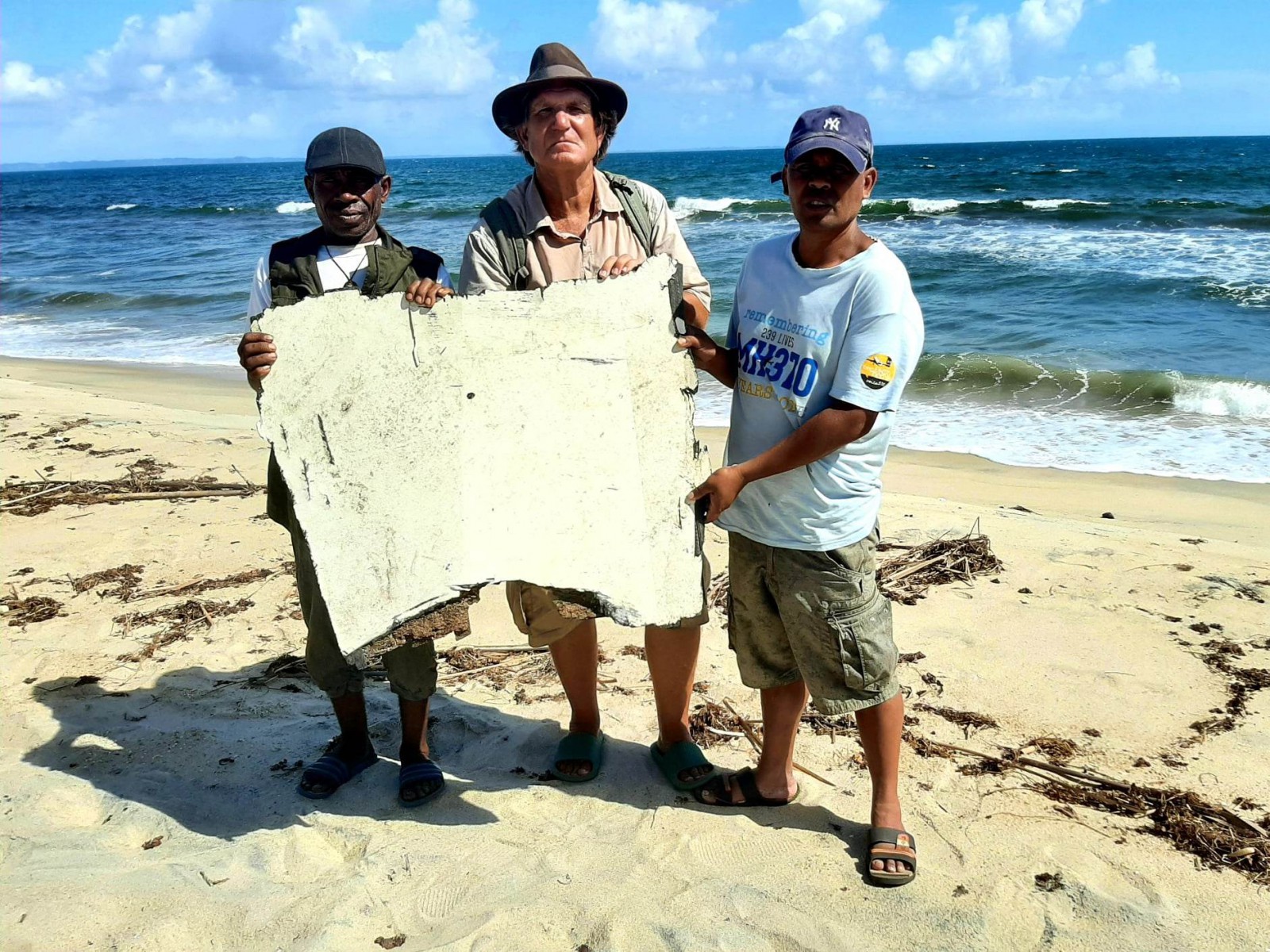MH370’s final moments have been brought into sharp focus with the discovery of a new piece of debris, giving major clues to the final tragic moments of the Boeing 777 that was lost in 2014 with all 239 aboard.
Subscribe to the Airlineratings.com newsletter to get the relevant news first
United Airlines orders up to 200 787s
Stunning videos of Emirates A380 crosswind landings
Travolta’s 707 is closer to its final home in Australia
The piece was discovered in a fisherman’s backyard and was found washed ashore on the Antsiraka Peninsula South Beach in Madagascar in March 2017 after tropical storm Fernando had passed by.
The debris item had barnacles on it when it was found and in total four items of MH370 debris have been found on the same beach. The location was predicted by the University of Western Australia (UWA) oceanographic model.
According to a new report by Richard Godfrey and Blaine Gibson, published today, the piece “is likely the remnant of the left main landing gear trunnion door” and is almost certain to be from MH370.

The significance of the find of the landing trunnion gear door is the damage to BOTH sides of the door which indicates that the landing gear was highly likely to be extended on impact.

Commenting on the new paper, Peter Foley the former ATSB MH370 project manager stated: “This may well be different as it may tell us the position of the landing gear. Very important as it may significantly add to the understanding of what happened at the end.”
According to the Godfrey-Gibson report “the level of damage with fractures on all sides and the extreme force of the penetration right through the debris item lead to the conclusion that the end of the flight was in a high-speed dive designed to ensure the aircraft broke up into as many pieces as possible. The crash of MH370 was anything but a soft landing on the ocean.”
Expert analysis has shown that the flaps were not extended as would be the case for sea ditching.
“We know from the analysis of the right outboard flap found on Kojani Island, Tanzania that this was not an attempted ditching, where the flaps would normally be extended because the expert analysis showed that the flaps were not extended. The realistic possibility that the landing gear was lowered shows both an active pilot and an attempt to ensure the plane sank as fast as possible after impact,” the report said.
Godfrey-Gibson adds that “the recovered 370 floating debris speaks to how the plane crashed, and the oceanographic drift analysis speaks to where. Neither can tell us who was flying the aircraft or why.”

All told 36 pieces of debris have been found and delivered to the Malaysian authorities for investigation, although official reports are still awaited for three items. Altogether 19 items of debris probably originating from MH370 have been found washed ashore in Madagascar, which is situated in the Indian Ocean at the latitudes where the South Equatorial Current interacts with the island.
Separately Mr Godfrey has used revolutionary WSPRnet tracking technology to pinpoint the final resting place of MH370. You can read his latest report here.
























